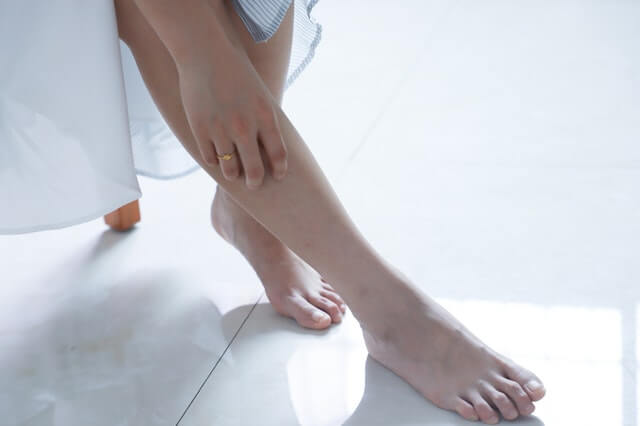When it comes to chronic foot pain, a common assumption is that only your feet muscles are the problem. Many physicians and patients treat the ailing foot as both the cause and effect. We might feel the pain only in our foot, but every part of our body is connected to another.
If you have a condition like plantar fasciitis or Achilles tendinitis, you know all too well how painful it can be. That is why it is important to pinpoint the root of the problem. Surprisingly, the core of the issue is often your lower back.
Let’s break down why imbalances in your lower back lead to foot pain.
The Connection Between the Lower Back and Chronic Foot Pain
Your brain and nervous system are involved in everything you do and you are actually hard-wired to overcome the effects of gravity, urging you to move. Your body is constantly sending information to your brain letting it know how much of a contraction is needed in a muscle and which muscles are needed for the job of keeping us upright. There is a sense of instantaneous integrity or stability that we can be upright without any effort. Our sense of balance is a delicate job. It is achieved with precision and accuracy depending upon the information received from your interaction with the ground. Don’t forget, the brain is sensing your “ground” not just through your feet when you stand and walk, but also when you are sitting and reaching, or on your hands or knees. If one piece of the puzzle is disrupted, the other parts will try to accommodate at first. But over time, accommodation gives way to compensation, and pieces of the puzzle no longer fit together.
The 32 vertebrae that make up the spine are connected to the pelvis, hips, and legs. Think of how many years you have been alive and the life experiences of injuries, near-falls, and accidents that you have had. Your brain has been covertly making a lot of adjustments in your muscular system to compensate and keep you upright and moving. One of these compensations is the progressing onset of tight lower back muscles. Over years, if you add in poor posture or chronic pain, the brain further responds by dialing up more muscular tension or tightness in attempts to keep your body parts balanced over each other as you move against gravity. SO, muscle tightness and stiffness is the brain’s protective reflex. It causes muscles to shorten and joints to compress in order to keep you moving. Muscles pull on the bone, before you know it, your pelvis gradually tilts forward and the hip socket starts to have more wear and tear, the muscles of the low back and inner thighs get tighter while the gluteal muscles of the hip and quadriceps muscles of the thigh get weaker.
If you have a forward pelvic tilt, you might notice that the curve in your back is fairly large. If you have scoliosis, the pelvis on one side is maybe higher and more tilted. The exaggerated curve in your lower back pushes your sit bones (bottom of the pelvis) far backward instead of orienting toward the floor and over the heel bone.
This tilt also changes the way your lower legs, ankles, feet, and toes make contact with the ground. When lower back tightness leads to hip tightness, it leads to hamstring tightness too. Your hamstrings not only help you bend your knees, but they also assist the glutes to carry the pelvis over the upper leg. They are the muscles at the back of your thigh, running from the sitbone to the behind the knee. When your hamstrings are tight, they alter how your hip joints move and often cause calf muscles to tighten resulting in very stiff ankle joints. If the ankle can’t bend, one’s balance during walking or ability to stand on one leg to dress is markedly impacted. To compensate for an ankle joint that is compressed, a person will start to grip the floor with their toes, creating tension in the four layers of foot muscles, pulling on the 26 bones of the foot. This can cause joint inflammation, and strain leading to chronic foot pain.
Besides a forward pelvic tilt, a tight lower back can lead to uneven hips or pelvis, too. One pelvis or one’s waist can be raised higher than the other, causing the nervous system to extend a pattern of tightness down that leg and pain in the connected foot. If you have chronic pain in only one foot, then this may be the case.
How to Treat Chronic Foot Pain
Now that we know the root cause of most foot pain is from the brain, in order to maintain the ability to balance over one leg, we must alter the solution to fit the problem. Instead of focusing on only the foot, we must take into account the way your body sits. Is there an excessive curve in your spine? Is your pelvis pulled forward?
Here is a video that might help your brain and nervous system to reflexively lessen the exacerbated muscular tension and compressed joints of the foot and lower back rather than just “stretching” tight muscles.
Understanding the role the nervous system plays in muscle imbalances is key in gaining back flexibility. A safe, effective method for doing so is the Feldenkrais method. These movement patterns treat your body as a holistic system, tracing your tightness and pain all the way to where it truly begins.
Find Relief from Pain
Interested in the Feldenkrais method for relief from painful foot conditions? I am a Guild Certified Feldenkrais Practitioner. Let’s work together to find out what imbalances are leading to your chronic foot pain.

